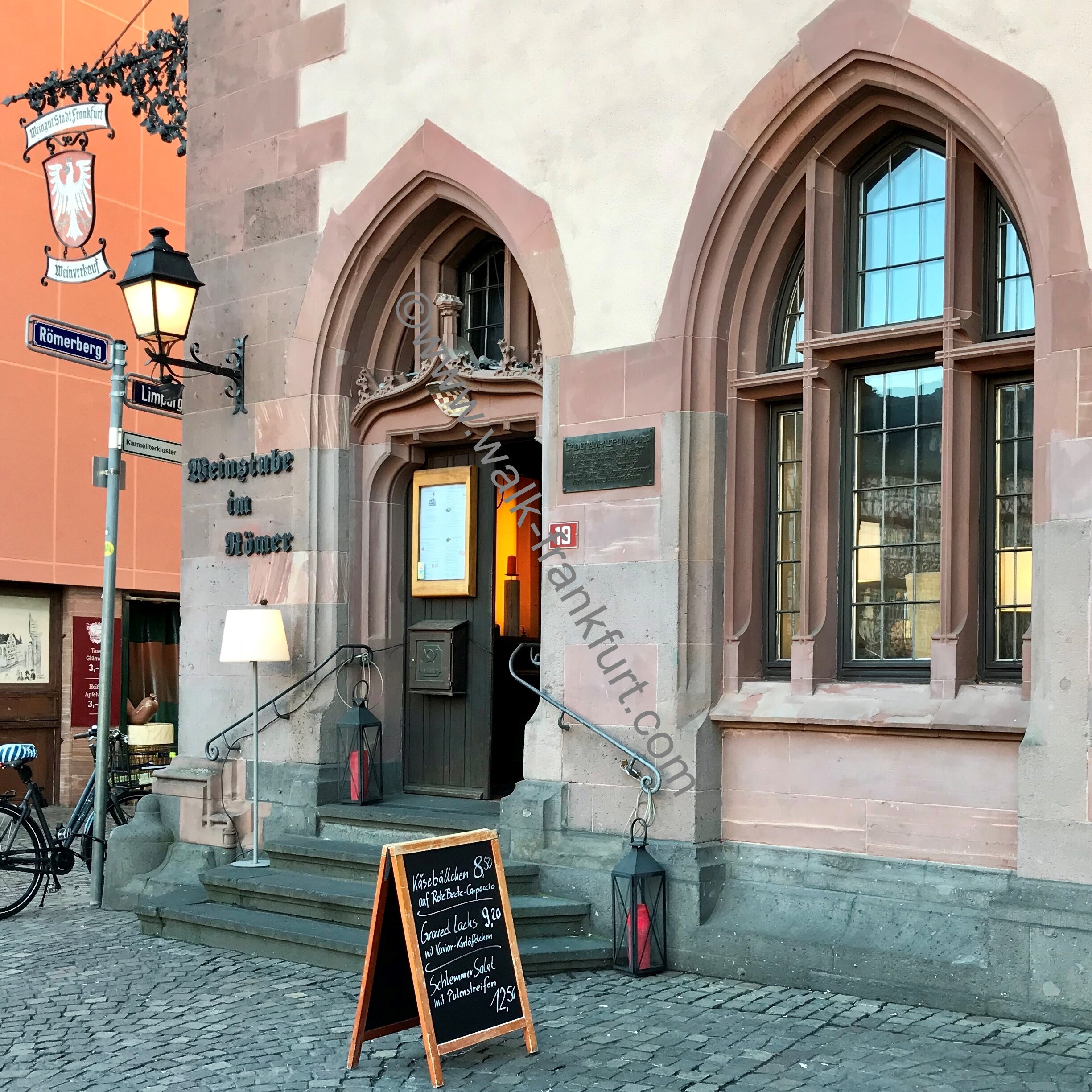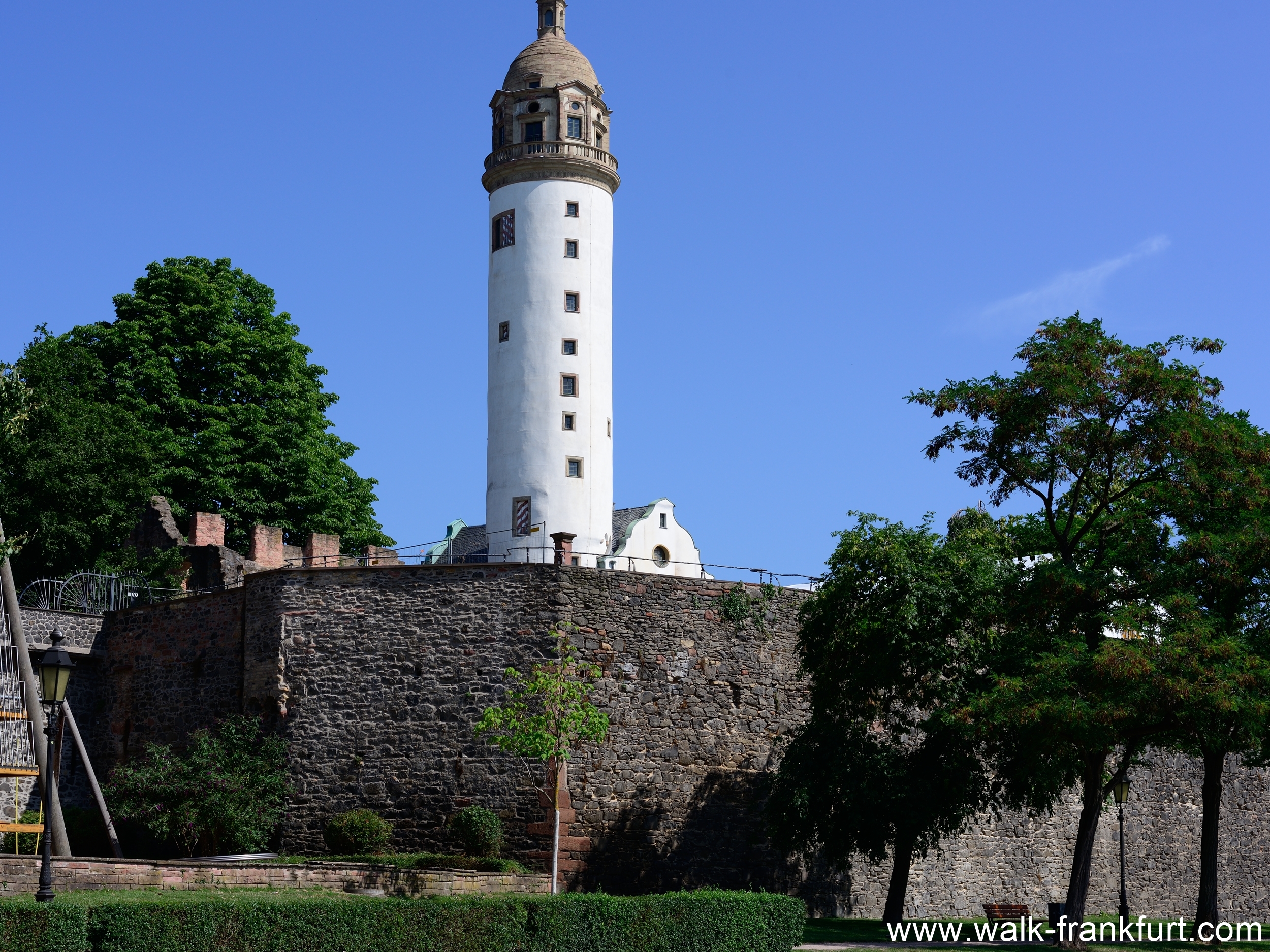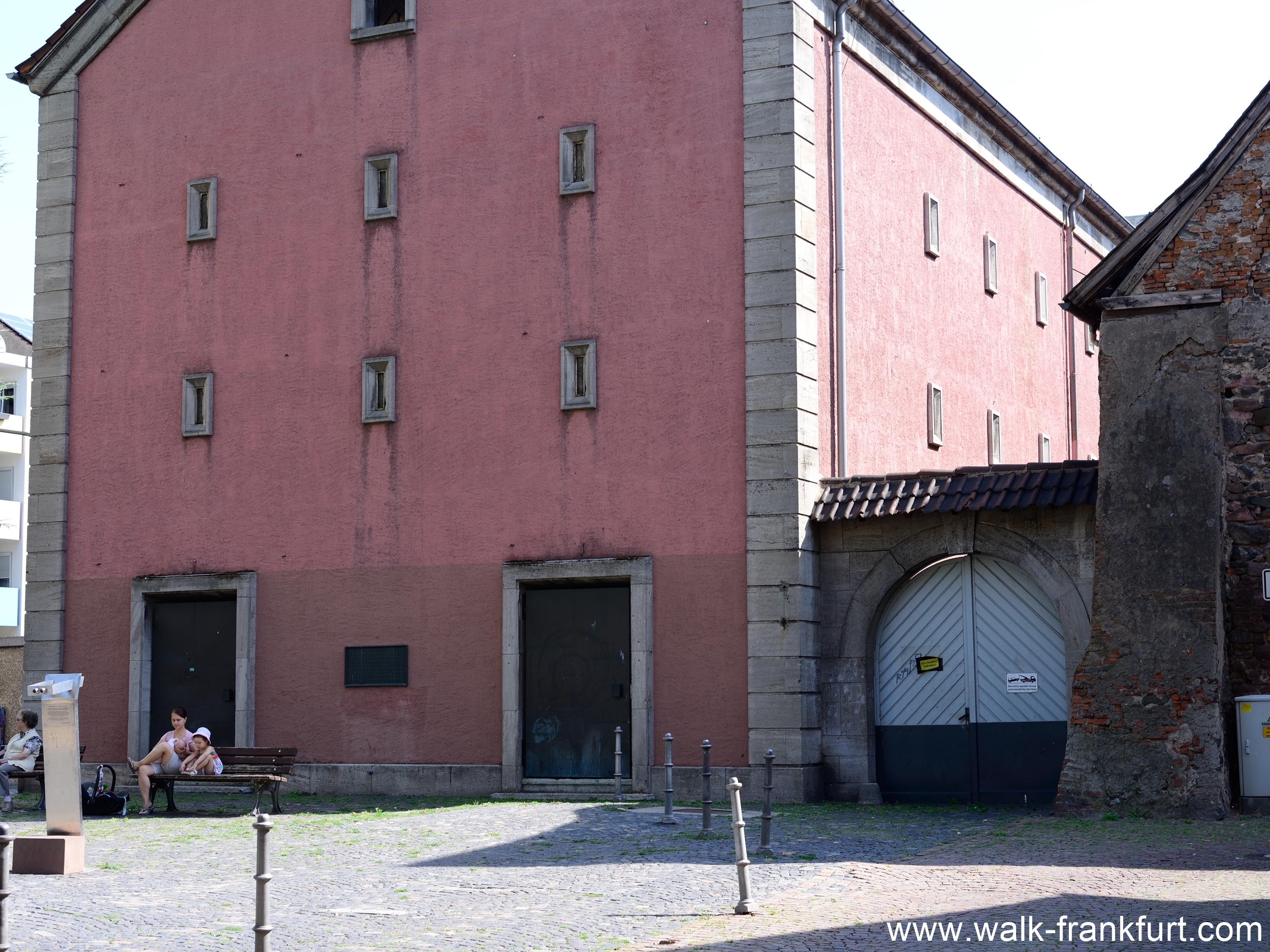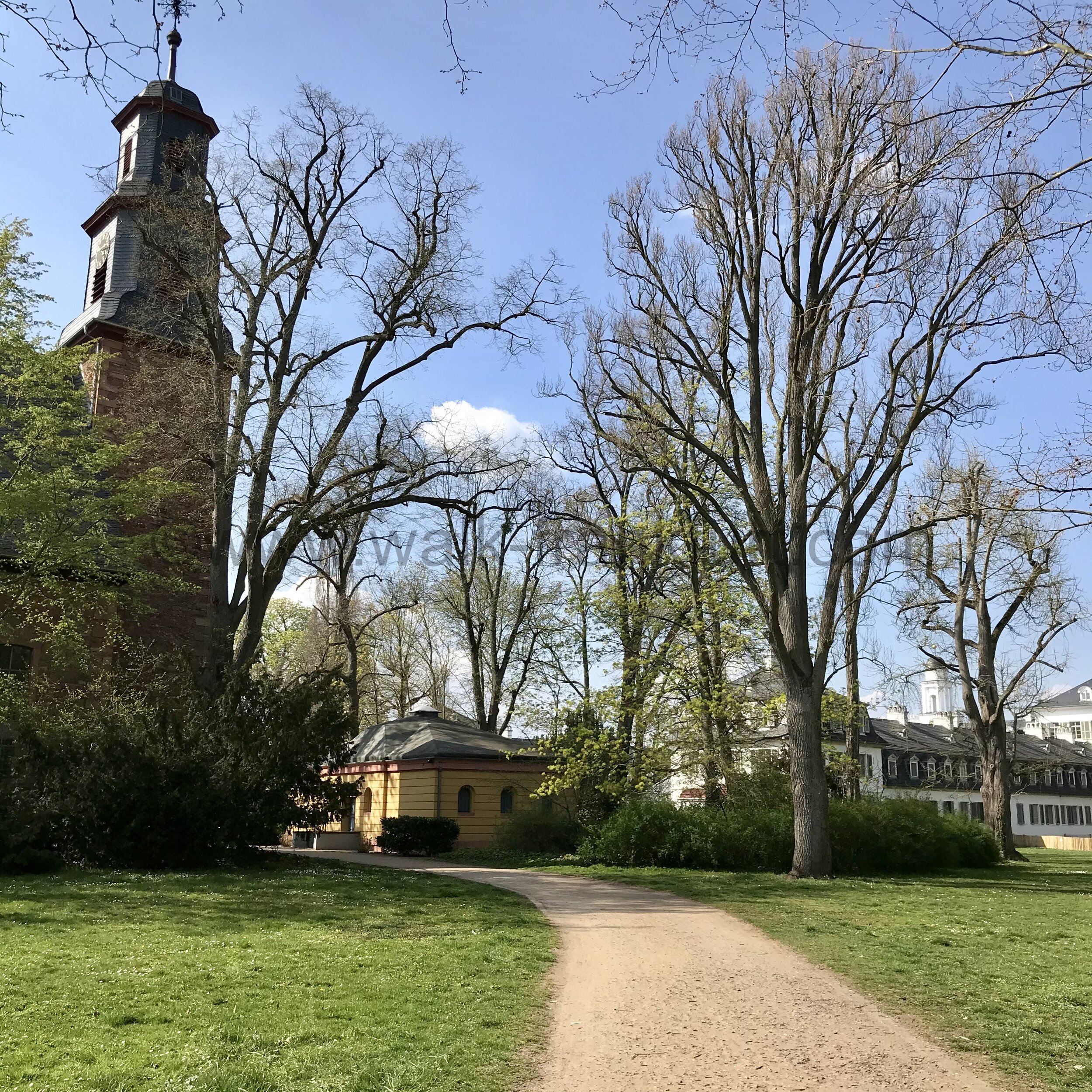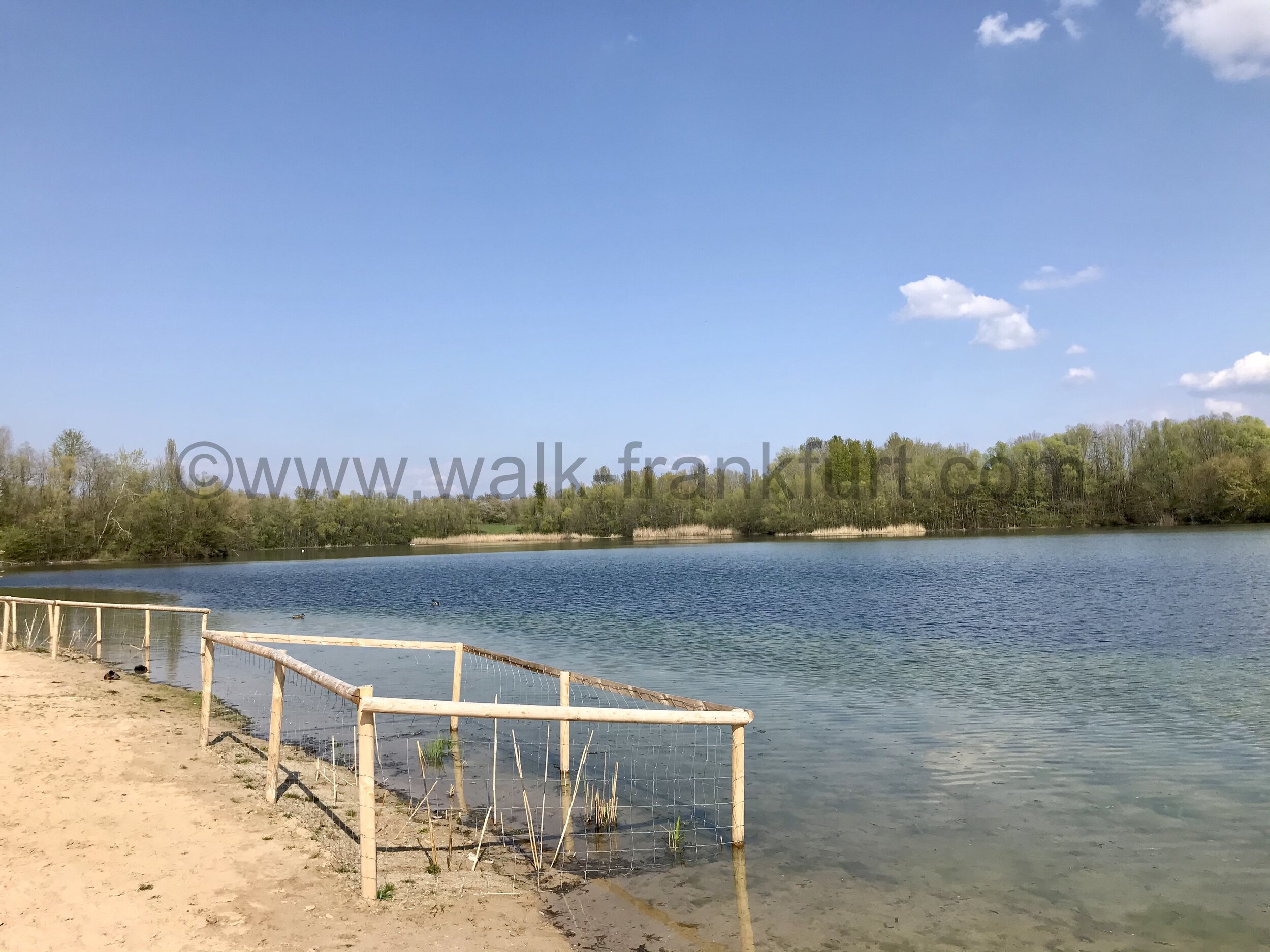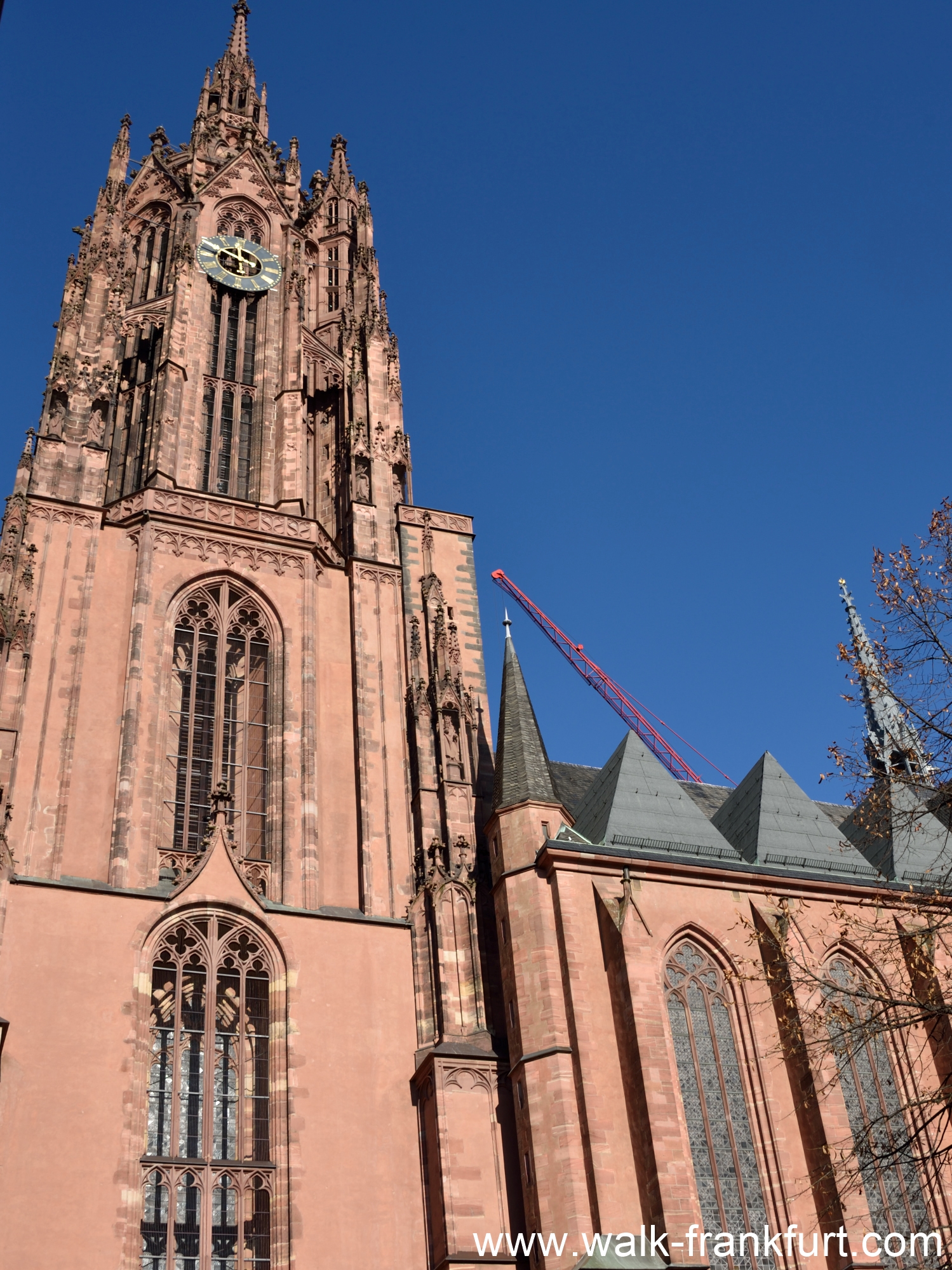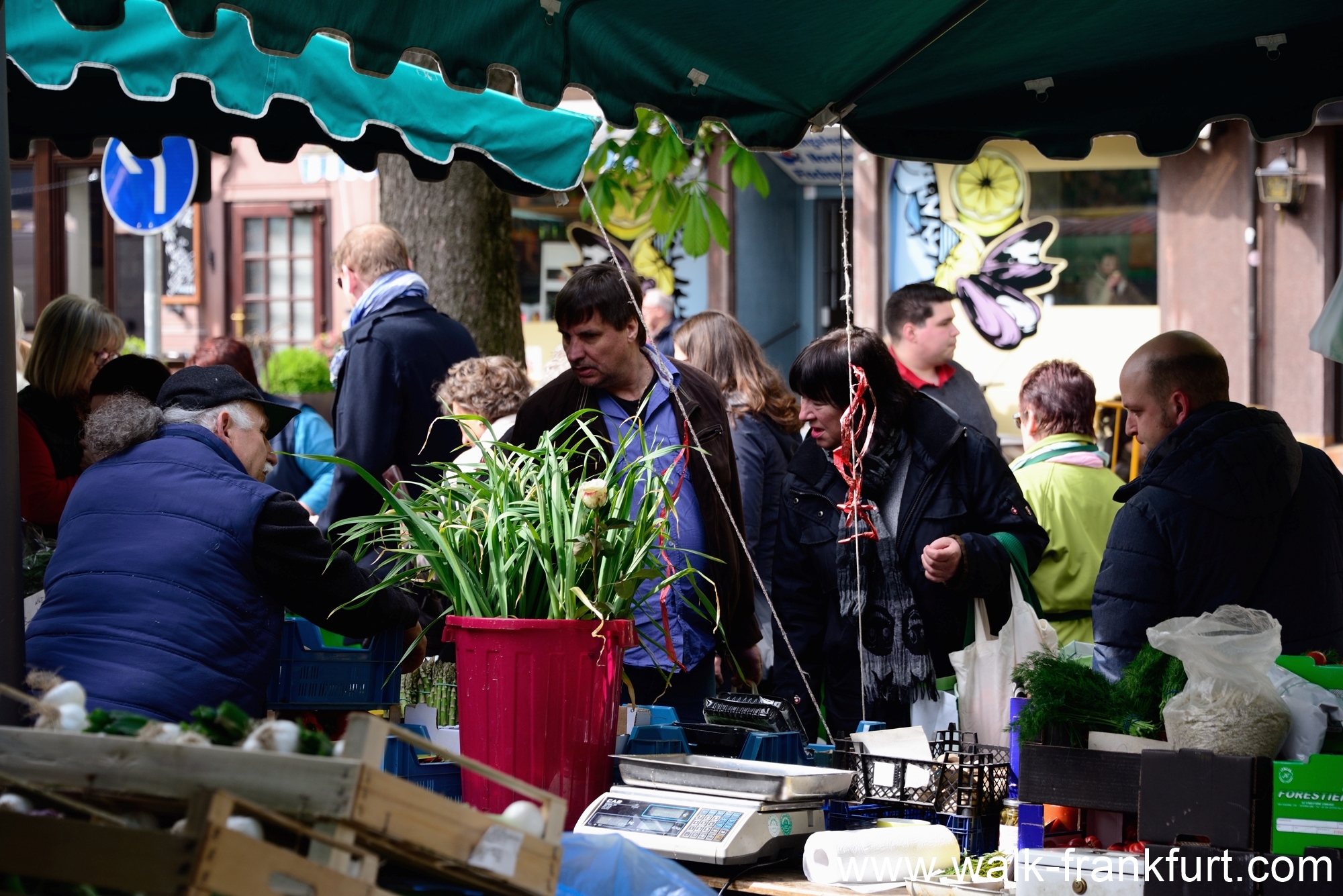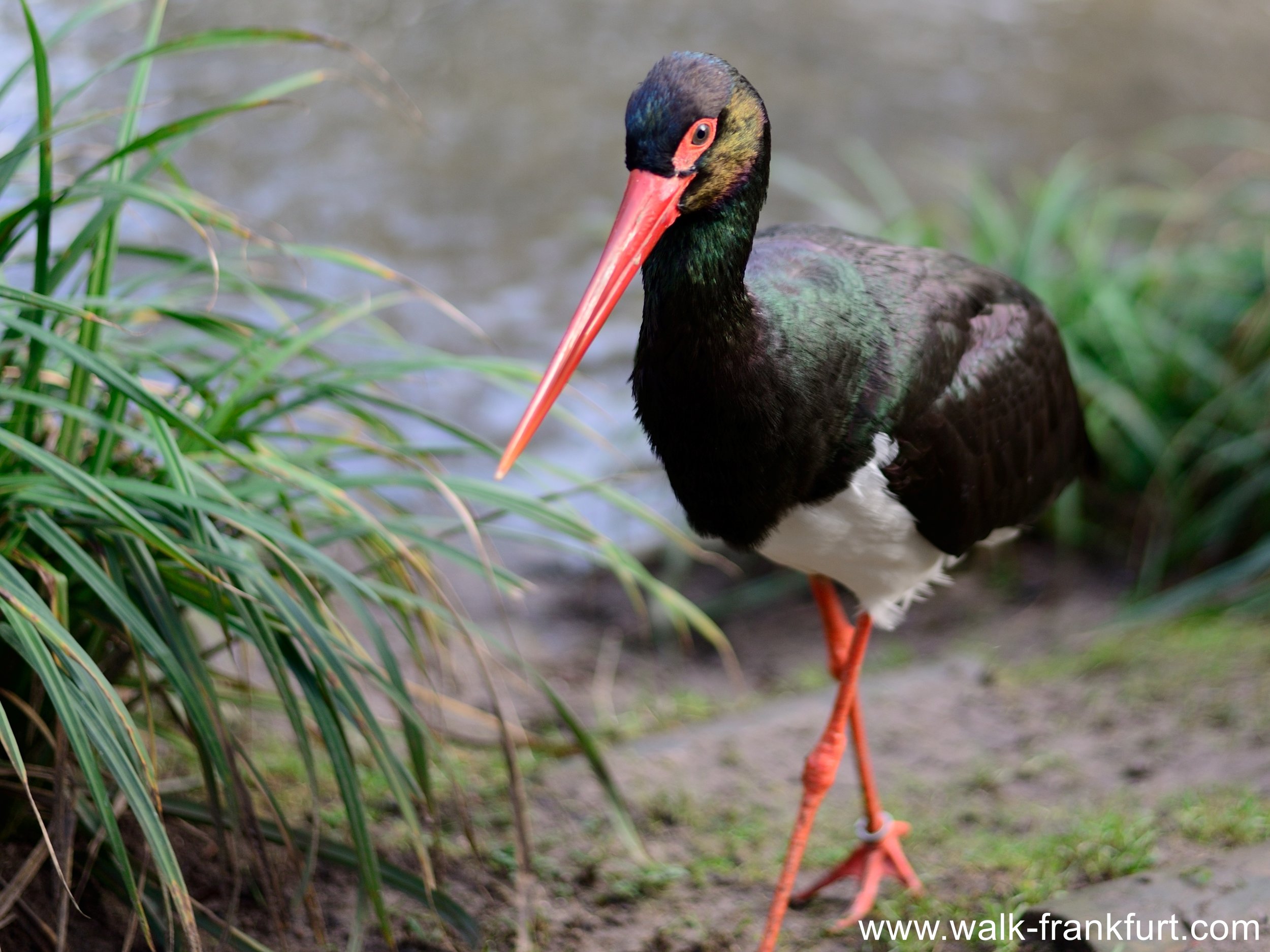Audio tour Frankfurt - Cafes, shops and other treats
Tips and hints on great places to eat, drink and be merry during the Frankfurt Old Town audio tour.
Updated 04.08.2024
The suggestions below follow the same route as the Voicemap audio tour for Frankfurt, plus a few extra hints and tips. If you spot a change, perhaps a new cafe you tried and liked, please, do leave a comment.
Listings
Key to listings: D - dining, C - cafe/coffee, Vg - vegan, TG - to go, W - wine
Along the tour route:
C Einsteins - (Römerberg 32) A bit like Starbucks, but it’s German, and very conveniently placed on the old town square. It keeps longer hours than most cafes in the area from 8am - 9pm.
C Kaffeehaus Goldene Waage (Markt 5) This is in the beautiful renaissance house, just opposite the cathedral. Cake and coffee are good, service is slow but coming here is all about seeing the beautiful renovations within. The cafe is also attached to the Friedrich-Stoltze Museum, free entry, which you will discover when visiting the cafe bathrooms!
D C Vg Metropol Kaffeeaus am Dom (Weckmarkt 13-15) I have an affection for this place. Home cooked food, great cakes and a garden that’s an absolute sun-trap. (Vegetarian and vegan goods too)
D Wirthaus am Hühnermarkt (Markt 16- 18, Hühnermarkt) In the heart of the New Old Town, the Wirthaus has a menu of traditional Frankfurt food and the quality is high. The pricing is a little higher too, but the setting is lovely and worth it.
C Hoppenworth & Ploch Altstadt (Markt 22, on the Hühnermarkt) Local coffee roaster. For those who like a flat white, this is the place to head to in the Old Town. Of course they have other drinks too! Next door is an excellent bakery.
W Balthasar Ress (Markt 13a, Hühnermarkt) Were you paying attention on the tour? Balthasar’s Weinbar is in the baroque, Grüne Linden, house on the Chicken Market! Balthasar’s produces it’s own wine close to Frankfurt in the Rheingau region. VDP quality wines that are worth trying. For a quick crib sheet on German wine terms, check out this link!
TG Metzgerei Dey - (Markt 13, Hühnermarkt) want to snack like locals do, whilst on the go? Grab a sausage from Dey’s. A family run delicatessen, here in Frankfurt since 1930.
D Badias Shirn Cafe Bar (Schirn Kunsthalle, btw Coronation Way and Bendergasse) Situated above the Coronation Way, Badias has a great selection of freshly prepared salads and dishes with a Mediterranean flair. Although not strictly gluten-free, it is possible to work around the menu and avoid gluten ingredients.
W C Wineschirn (Römerberg 8, directly opposite the U-bahn escalators, exit Römer) ) Another one of my favourites, Weinschirn has a lovely selection of German wines and a few from other lands too. Noted also for the delicious Flammkuchen and small plates of ham and cheese if you’re feeling peckish!)
C ConduitCouture (Fahrtor 1, by Haus Wertheim) On the way to the Iron bridge, queue up here and grab a fine piece of cake or a home made ice-cream. This patisserie makes all the classics, including the famous Frankfurter Kranz, a vanilla sponge with butter cream, jam and a nutty croquant. You can also buy packs of Bethmannchen here - the traditional Frankfurt, baked marzipan treats.
Schirn Art Gallery (Römerberg) modern art gallery offering alternating exhibitions. Check the website for details)
Kaisersaal (entrance on Limpurgergasse. Daily 10am-1pm and 2pm-5pm) The Kaisersaal contains 19th century portraits of all the Holy Roman Emperors. As you walked along Limpurgergasse, after seeing the eavedropping man and cat, you might have noticed a sign on the side wall of the town hall. It’s the entrance point to the Kaisersaal. Walk through the gates, turn right and walk up the the ornate stairwell to gain entrance.
Other recommendations
Not on the tour, but very close by
Braubachstrasse has quite a few cafes, and a couple of antique stores, and is worth exploring, a few highlights are below:
Key to listings: D - dining, C - cafe/coffee, Vg - vegan, TG - to go, W - wine
Handwerkkunst Frankfurt (Braubachstrasse 39 ) If you are looking for traditional German wooden decorations and souvenirs, this shop is close to the Römerberg.
C Iimori (Braubachstrasse 20) The best patisserie in Frankfurt for French bakery specialities and Japanese specialities too.
Fotographie Forum Frankfurt (Braubachstrasse 30-32) A small gallery for photography enthusiasts.
C D Margerete (Braubachstrasse 18) Good for lunch and afternoon coffee and cake. Sit out front and watch the world go by. IMO not so great for dinner.
C Zart & Bitter (Braubachstrasse 14) One for the chocolics! A shop selling all manner of chocolates!
C Mehl.wasser.salz (Domstrasse 10) is an excellent bakery with lots of seating, selling light breakfasts and lunches too - with vegetarian options.
Ice-cream
There are lots of ice-cream vendors around the old town but one stands out as better quality than the rest:
C Condit Couture (Fahrtor 1) A small Konditorei that also sells ice-cream in the summer months.
Kleinmarkthalle
Kleinmarkthalle (Hasengasse 5 -7) The indoor market has take out, wine, coffee and lots more. It’s a Frankfurt institution and locals hang out at Rollanderhof Wein on the 1st floor. It ‘s a very short walk from the old town. There is a second entrance from Ziegelgasse.
Jewish history in Frankfurt
Frankfurt has a Jewish history dating back to at least the 12th century and there is some excellent information on the web to guide you to key cultural sites within Frankfurt, http://en.juedisches-frankfurt.de/
There are two museums in Frankfurt city centre dedicated to Jewish heritage in the city, both offering extensive information in English as well as German. The museum of the Jewish Ghetto, Batonnstrasse 47, displays the original foundation stones of the Frankfurt ghetto, first built in 1462. The Jewish Museum Frankfurt, Bertha-Pappenheim-Platz 1, has exhibits detailing Jewish life in Frankfurt from the 1800’s onwards.
In addition to these two central museums, is the Bildungsstätte Anne Frank, a small exhibit dedicated to Anne Frank, whose family lived in Frankfurt until they moved to Amsterdam to avoid the persecution of the National Socialist regime. This museum is easily accessible by taking the U-bahn (1,2,3 or 8) to Dornbusch. During my last visit they were exhibiting the original diary of Anne Frank.
An exhibit from the Bildungsstätte - Anne Frank in Frankfurt
As well as the information listed on web about Frankfurt Jewish culture there are some additional places to visit which have a Jewish connection. Up near the old opera house is the Rothschildpark, situated on land where the Rothschild's once lived. A placard by the park entrance, on Bockenheimer Landstraße, offers information and photos about the family home that once stood there.
Not far from Konstablerwache is a remnant of the old city wall, the Staufenmauer, dating back to the 12th century. It's also the north entrance to what used to be the Jewish ghetto, first constructed in 1462 and, up until 1815, Jewish residents were confined to living there. Today nothing exists of the old ghetto but walk through the old north entrance and head south towards the Jewish ghetto museum (Museum Judengasse) and you will be treading the path of where the ghetto used to stand.
Staufenmauer, the 12th century city wall and the entrance to the Jewish ghetto.
As you reach the Jewish ghetto museum, on the south east corner of Kurt-Schumacher-Straße and Battonstraße, look out for some brass plates laid into the ground with house names on them, e.g. Goldenes Schaf. The brass plates outline where some of the ghetto houses previously stood and are part of the museum exhibit. The entrance to the Jewish ghetto museum is 30 metres along Battonstraße and it is the ideal place to visit for more information about life in the ghetto.
Next door to the museum, is the old Jewish cemetery, in use from the 1200's through to the 1800's. Around the cemetery walls are listed almost 12,000 names, the names of the Jewish Frankfurt citizens murdered during the holocaust. Follow the wall to the south side and into the Neue Borne Platz, previously the old Jewish market place, today it is a permanent place of remembrance. If you wish to enter the cemetery a key can beborrowed from the museum, but only on production of a valid ID card.
A name Block from the Jewish cemetery wall memorial.
This link also gives details of the other two Jewish cemeteries in Frankfurt, which are both accessible via a short ride on the U-bahn.
In the heart of the old town, on Römerberg stands the Alte Nikolaikirche. Step inside and notice the colourful stained glass windows in the south wall and one to the west. These windows formerly belonged to Carl von Weinberg. Born into a Jewish family in the 1880's he converted to the evangelical faith however, because of his Jewish beginnings, the National Socialist regime reclassified Carl von Weinberg and forced him to sell his estate. The window's creator, Lena von Schauroth, took the windows for save keeping and in 1951 permission was given for the windows to be installed in the Alte Nikolaikirche. Another relic from the von Weinberg estate is the Florentine fountain, an original 16th century renaissance sculpture which can be found in the Wallanlage park, next to the Nebbiensches Gartenhaus.
The Wollheim memorial in the Goethe University grounds, Frankfurt.
The Goethe University grounds in the Westend, house the Wollheim memorial, dedicated to slave labourers forced to work at IG Farben during the second world war. The main university building is the former IG Farben headquarters. The public are free to walk around the university grounds which connect up with the Grüneburgpark, and the Botanical Gardens.
Heidelberg audio tour - cafes and other recommendations!
What makes Heidelberg so unique? Why does it feel so different to other German towns? Walking along the narrow streets you will hear how French troops burned Heidelberg to the ground and then about its re-birth as a baroque city, "beautiful and straight". The baroque features of the buildings then spring to life all around, as do the hidden remnants of the former medieval Heidelberg. Discover why there are so many madonnas in Heidelberg often perched above looking down upon the busy shoppers below and what the bronze monkey represents.
Student life features strongly in Germanys oldest university city:
- a student union canteen in an old medieval stable, - a dedicated student prison, - a new university building built around an old medieval witches tower, - a library in the architectural wilhelmian style, - famous students, both good and bad.
Heidelberg didn't escape the effects of World War Two either. Discover the book burning memorial and and stumble stones and the site of the old jewish synagogue, and who actually blew up the old bridge. Discover the influence the Americans have on this city too, both before and during the war.
Download the Voicemap tour and start discovering and exploring!
Updated 16.02.2025
The suggestions below follow the same route as the voicemap audiotour, downloadable by following the link, plus a few extra hints and tips. If you spot a change, perhaps a new cafe you tried and liked, please leave a comment.
Cafes etc.
Key to listings: D - dining, C - cafe/coffee, Vg - vegan, TG - to go, W - wine
Along the tour route:
D Vetters Alt Brauhaus - (Steingasse 9) A clasic brewery serving it’s own beers and hearty plates of German food. Open for lunch and dinner until late.
C, D, W Cafe Burkhardt (Untere Str. 27) Originally a wine bar Cafe Burkhardt is now the place to go for lunch or a bite to eat, especially for a choise of vegetarian food or gluten-free options.
C Ahmed's Middle Eastern Eatery (Untere Str. 23) Opening post lunch time and staying open until late, popular with the students, Ahmed’s serves very good falafel amongst other hearty plates of food. Plenty of vegetarian options.
D, C Rada Coffee & Rösterei (Untere Str. 21) For a great cup of coffee this is the place to head too. Home made cakes including gluten free options, too. Better still, they also offer gluten free lunch options.
C, TG OK Kool (Marstallstr. 7) The place for some great home made ice-cream, cakes and a good cup of coffee too, Limited opening hours, though!
C, TG, Moro Caffe & Thé (Haupstr. 160) Long time known as the coffee shop in Heidelberg. Stop here for a perfectly made cappuccino and a (large) piece of home made cake.
Slightly off the audio tour route:
D Mahmoud's Altstadt - (Merianstr. 3) Slightly off the audio tour track, but located on a nice quiet back street, Mahmound’s is known for it’s middle eastern food, fresh salads and falafel.
C Panno (Ingrimstr. 22) On the street leading to the funicular railway up to the castle, this tiny cafe serves excellent coffee and great cakes too. Very chilled!
D Kulturbrauerei (Leyergasse 6) Yes, it is popular with the tourists, but the Kulturbrauerei has a lovely garden in the summer months, and brews it’s own beer.
W Weinstube Witter (Hauptstr. 224) A lovely old wine bar, with a lovely choice of local wines by the glass, and some small bites for when you suddenly realised you’ve been here a lot longer and perhaps drunk a glass or two more than planned :-)
Souvenirs
Letter & Co (Untere Str. 24) for a slightly different Heidelberg souvenir, this shop proudly stocks Kaweco pens, a firm which was originally founded in Heidelberg 1883.
Käthe Wohlfahrt (Hauptstr. 124) a dedicated Christmas shop selling german made Christmas decorations all year round.
University Souvenirs (Augustinergasse 2) Purchase Heidelberg university t-shirts, mugs and hats at the Student Karzer.
Heidelberg Castle
A trip to Heidelberg is not complete without a trip to the castle. Walking up is one option and there are various routes, the most common being the path next to the funicular railway.
The grounds of the castle are free to explore and offer some lovely views. To enter the castle you will need to purchase a ticket. Alternatively take the funicular railway (Bergbahn) up and entrance to the castle is included.
The funicular railway can be found at the corner of Kornmarkt and Burgweg/Zwingerstrasse. Ticket prices and other information are detailed in the link.
Frankfurt Höchst
Timber-framed medieval houses, a market, a castle and a ferry boat too. Many of the reasons to visit Frankfurt-Höchst.
Sometimes written Hoechst, this little town in the western suburbs of Frankfurt has beautiful, timber-framed, medieval housing, an old town square, a delightful castle (the former residence of the Archbishop of Mainz), and a beautiful riverside along the Main.
Höchst is just 15 minutes by train from Frankfurt Hauptbahnhof and can be reached using the S1 or S2 trains. It is within the Frankfurt travel zone area and the trip is covered by daily, weekly and yearly travel cards. To find the old town, alight at Frankfurt Höchst, exit the station to the south and head along Justinuskirchstraße.
It is also a very pleasant cycle ride to Höchst travelling west, out of Frankfurt, along the south bank of the river Main towards Schwanheim. As you draw level with Höchst, on the opposite riverbank, there is a small ferry boat which shuttles passengers to and fro, across the river, for just 1,50€ (1€ for children. The ferry does not run on Monday or Wednesday). Once on the Höchst riverbank, you are directly in front of the old city gate and walls. Walk through the gate and you enter the old town. Alternatively, you can take refreshment at the Alteschiffsmeldestelle, an open air cafe 100m to the west of where the ferry docks.
Höchst castle has some lovely grounds to explore and is in the heart of the old town. The small square as you approach the castle has plenty of quaint places to eat and relax in. From the square it is possible to walk down and through the gate of the old town walls and to the river bank.
Close to the castle is Justinus Church, one of the few, almost complete, early medieval churches in Hessen. Open to the public from 2pm- 5pm, Tues - Sun during the summer months, it also has a pretty flower and herb garden worth visiting too. In the corner where Justinusplatz meets Badstubengasse, there is a small wine garden associated with the Winzerverein Deidesheim. It’s only open Saturdays and public holidays, but if it is open, pop in.
Just taking a walk through the streets of old Höchst will provide the quaint sight of beautifully restored medieval, timber houses. Streets of note are: Burggraben, Antoniterstraße, Kronengasse, and Alt-Höchst. On Bolongarostraße 152, is the Kronberger Haus which hosts the Höchst Porcelain Museum. The museum is small but it's a must for anyone interested in porcelain and pottery manufacture, open Sat & Sun from 11am - 6pm.
On Tuesday, Friday and Saturday morning a market is held at Höchster Markt, lots of fruit and vegetable stalls and a flower market outdoors. In the indoor market is a good variety of diary, meat and delicatessen stalls. The coffee stand is particularly popular. Outside, on the north-eastern corner of the market place is Cafe Piccolo, serving delicious ice-creams. At the eastern side of the market place is a large, ugly, pink building which is an old air-raid shelter built during World War 2. However, it is the former site of the local synagogue which was destroyed to make way for the shelter. Take a look through the binoculars stationed outside the bunker to see image of the former synagogue as it previously stood.
Whilst in Höchst, take some time to visit the church of St. Josef, on the corner of Hostatostraße and Justinuskirchstraße. Plain on the outside but a treasure of early 1900's architecture on the inside.
A walk (or cycle) from Fechenheim to Rumpenheim
Fresh air and feeling at one with nature away from the noise and bustle of city life. This stretch of the River Main is particularly beautiful with weeping willows gracing the river banks and, at arrival in Rumpenheim, a small “Schloss” in the heart of this quiet town.
Getting there
Simply take the number 11 tram (direction - Schießhüttenstraße) and alight at Arthur-von-Weinberg-Steg, also listed as Fechenheim Post on google maps, where the pedestrian bridge takes you over to the other side of the river and where the walk begins.
This area is away from any roads, the only noise pollution is that of the birds. Some people like to take a picnic and find a sunny spot along the river bank to enjoy the peace and quiet. The route mapped out is simple, just follow the river bank to Rumpenheim.
Rumpenheim
Rumpenheim is a quiet place. The highlight is the old Schloss, was founded in 1678 as a manor house and in the late 1700 extended to become the building recognised today. The Schloss is divided up into private apartments, but it’s park is a public area. Rumpenheim is home to many artists, and one weekend a year artists open their doors for the Rumpenheimer-Kunsttage, taking place on the 18th & 19th September 2021. Check the link for more information and possible changes due to CoVid restrictions.
Route to the Rumpenheimer und Bürgeler Kiesgrube
Taking the small streets out Rumpenheim will lead you past riding stables and towards the Rumpenheimer and Bürgeler Kiesgrube, a nature conservation area. It’s also home to a pond that is open to the public for bathing.
Heading back to Frankfurt
From here it’s an easy stroll back to the river bank and the Arthur-von-Weinberg-Steg o catch the number 11 back into Frankfurt city centre. If you are on your bike, head back to the river bank and follow the river, on the southside, for a beautiful ride back towards Frankfurt (the northside of the Main is very industrial and not worth following).
How to download and use Voicemap for your Walk-Frankfurt audio tours
How to...
download and use Voicemap
In conjunction with the Walk-Frankfurt audio guided tours, here is a how-to guide on downloading and using the voicemap app.
How does VoiceMap work?
VoiceMap uses your phone’s GPS to play commentary automatically. Once you have the Voicemap app and have downloaded an audio tour, plug in your earphones, press start , and put your phone away. A voice will tell you where to go, and the next part of the story will only play once you move on. You can walk at your own pace, and stop for pictures along the way. Just listen out for directions, and if you can’t remember where to go, take a look at the map on your screen.
How do I install the app?
You can download the app for Android devices in the Google Play Store, and iPhone in the App Store. Just search “VoiceMap” and look out for the red headphones icon. Once it’s installed, sign up.
Why do I have to sign up?
Once you download a VoiceMap tour, it’s yours forever. You need to have an account so that you can access your tours.
Do I have to be near a WiFi network?
You can use WiFi or data to download the app and the tour. Wait for all the files to download, and then you can disconnect and turn off your mobile data. All the audio files and maps will work offline. Make sure you don’t put your phone on airplane mode. That turns your GPS off, so nothing will play.
How much does the app cost?
The app is free to download. Frankfurt tours are individually priced, starting at $4.99.
How do I play the audio tracks?
Don’t worry about it! VoiceMap will take care of all that. You don’t need to manually play, pause or skip to the next track. The app does all of that for you.
How do I start?
Once the tour has finished downloading, just press start and the tour will begin right away. If nothing is playing:
- check you are on the right tour,
- check you are close enough to the start point. Voicemap tells you how many meters to the start point and starts automatically once you arrive.
What's my password?
It’s the password you entered when you signed up to the Voicemap App. If you can’t remember, you can reset it at the website (voicemap.me) or in the app.
Can I listen to a route I’ve downloaded more than once? Do routes expire?
Once you download a tour, it’s yours to keep. You can delete it from your phone, and still
re-download it at any time in the future.
Nothing is playing! What do I do?
Check the following:
1. Is your GPS turned on? VoiceMap needs GPS to be enabled to play audio.
2. Is your phone on airplane mode? If yes, turn it off. Airplane mode disables your GPS.
3. Have you allowed VoiceMap to access your location? If not, go to your location settings and allow the app to use your location.
4. Did you allow all the tracks to download completely?
5. Is your volume turned up, and are your earphones working properly?
Can I stop a tour?
You can stop whenever you like. The tour will resume automatically when you reach the next point of interest. Just make sure you don’t close the app, or you’ll have to start from the beginning. Remember that when you start walking again, it’ll carry on automatically, so put your earphones in before you get going.
Are there other tours?
As well as the Walk-Frankfurt walking tours, VoiceMap offers tours in over 45 cities, each one unique and created by passionate locals. You can browse the city list to see what’s available.
A tour of Frankfurt with Walk Frankfurt
A description of the typical sights that Frankfurt has to offer on Walk-Frankfurt walking tour.
There are lots of great things to do and see in Frankfurt. History lovers will enjoy the old town with stories dating back to Roman times, through the middle ages and into the 1800’s. The modern shopping heart of Frankfurt offers a wide variety of shops, quickly accessible by foot, and foodies will love the daily indoor grocery market and the farmers markets hosted at the end of the week.
To answer the frequently asked question, “what will I get to see on a tour?”, I’ve listed the sights below, and most popular tour duration’s, to help you decide what you would like to see on your tour.
A 90 minute tour
This tour focuses on the old town, but also brings you to the Zeil, the modern shopping heart of Frankfurt. The sights are:
Römerberg - the main square with the beautiful town hall. This is the heart of the old town.
River Main and Eisenersteg - views up and down the river including views of the European Central Bank (ECB) and other skyscrapers.
Haus Wirtheim - the only remaining, in tact, 17th century house on the Römerberg.
Alte Nikolai church - a small church with foundations from the 12th century and 20th century stained glass windows by Lina von Schauroth.
New old town - 35 newly developed buildings bring back to life a part of the old town destroyed in World War II.
Roman remains and the Holy Roman Emperors Kaiserpfalz - historic remains, highlighting the importance of Frankfurt throughout the centuries.
Kaiserdom - the Emperor’s cathedral. The place of the Holy Roman Empire elections and coronations.
Paulskirche - the starting point of German democracy. Open to the public from 10am - 5pm.
Kleinmarkthalle - the indoor market. The place to sample traditional Frankfurt boiled sausage and local wine too!
Hauptwache - the former 18th century police station and heart of Frankfurt’s modern shopping centre.
Deutsche Börse - the old stock exchange and formerly the heart of the banking quarter.
A 2 hour tour
A two hour tour includes the sights listed for the 90 minute tour and extends to include some of the options below. Unfortunately you won’t have time to visit all the options below, so it depends on what you would like to see:
Goethe’s house - literature fans will appreciate the chance to visit Goethe’s place of birth (although there is an entrance fee to visit inside.
Goetheplatz - a statue dedicated to the author and an area of “high-end” shopping.
Fressgass’ - a street of eateries and, in the summer, some great festivals.
Alte Oper - the old opera house. Beautiful renaissance architecture at the western end of the city centre.
Carmelite cloister - open to the public and displaying the 16th century fresco by Jörg Ratgeb.
*Outdoor markets - Konstablerwache and Schillerstrasse
*Farmer’s market are hosted from Thursday to Saturday. They offer a unique piece of Frankfurt life where you join the locals in a glass of apple wine and a bratwurst.
A 3 hour tour
A 3 hour tour will suit you if you want to take a more leisurely pace through the sights of Frankfurt, perhaps stopping for a coffee or even a glass of wine at the indoor market. If you are energetic, and want to achieve your 10,000 steps a day, in 3 hours you can cover all the sights above and also include:
Eschenheimer Tor - a remnant of the original medieval wall and a classic piece of 14th & 15th century architecture (the tower being attributed to Madern Gerthener)
Bockenheimer Anlage - a beautiful park, leading to the old opera house, following a path that used to be the 14th century city battlements.
Memorial to the Jewish victims of the holocaust - to the east of the city is the old Jewish cemetery and memorial.
Frankfurt New Altstadt
In September 2018 Frankfurt celebrated the official opening of the "new" Altstadt. This incredible development reflects architectural styles spanning six centuries. Of the 35 buildings which make up this new quarter, 15 of the houses have been authentically recreated whilst the other 20 properties have a modern contemporary style. The whole project was funded by the city costing 200 million euros and was over 12 years in the making.
Pre-war the old town was an area of 28,000m² and was the most expansive medieval old town in Germany. However, on March 22nd 1944, the bombs rained down. The timber-framed, medieval houses, were not able to withstand the fires, resulting in 80% of the old town being destroyed.
Frankfurt wanted to rebuild itself as a modern city and by 1974 the Technische Rathhaus (technical town hall) took pride of place between the cathedral and the Römerberg. However, there was little love for the building’s brutalist architecture so when it was voiced that the building was to be demolished, the locals wasted no time in petitioning for a sympathetic redevelopment of the old town to represent what stood here before the war.
Today the old town is 7,000m² and is only a quarter of it's previous size. The new development brings back to life former times from the Romans, to the Kaiserpfalz of the earliest Holy Roman Emperors, and the centuries of architecture that followed.
Underneath the Stadthaus, and open for the public to view, lay the old Roman ruins, walls of the former Kaiserpfalz and some of the earliest medieval cellars.
Two of the old trading yards, Hinter dem Lämmchen and Hof zum Rebstock have been beautifully re-crafted, and after 70 years of being blocked, the Coronation Way, Krönungs Weg, is once again a thoroughfare for the public to retrace the steps of the newly crowned Holy Roman Emperors from the cathedral to the Römerberg.
The Hühnermarkt is the hub of the quarter, with the gothic Neue Rotes Haus ready to house "schirns" of yester-year and the Esslinger Haus, with it's reference to Tante Melber, an aunt of Germany's most famous author Johann Wolfgang Goethe. The baroque Grüne Linden, on the south side of the market place, houses the Balthasar Wein Bar offering quality German wines to thirsty passers-by. Meanwhile, on the east side, a row of classicist housing has been recreated. In the centre of the Hühnermarkt stands the fountain dedicated to Friedrich Stoltze, a local satirist and activist of the 1848 democratic movement.
The most outstanding house, the Goldene Waage (the Golden Scales) stands opposite the cathedral. It cost €8 million to authentically recreate both inside and out. This replica 17th century renaissance house is to be managed by the Historical Museum and is open to the public as a cafe and it also has internal access to the Stoltze Museum next door, in house Weisser Bock..
Take some time to explore the new town. Better still, come on a Walk-Frankfurt tour and get the full details and stories of what life was really like here throughout the centuries.
A day out at the Frankfurt zoo(s)
Frankfurt has two zoos which are open every day of the year. Even in winter they offer a great day out with plenty of indoor exhibits as well as the outdoor pens where the animals roam.
The City Zoo
Located just 1 km east of the city centre the city zoo has it own U-bahn stop, "Zoo" on the number 6 and 7 lines and tram number 14 also stops right outside.
The zoo houses 450 species of animals and birds, including Kumar and Vanni, the lion and lioness. There's a monkey house, an exotic bird house and even peacocks strut freely around the grounds. A bonus for those with young children is the opportunity to hire a pull-along cart (3€), which is ideal for carrying backpacks and even tired children and there is a special petting area with goats and sheep. The zoo has various pit-stops offering snacks and drinks along the way and an indoor cafe.
The "animal of the month" feature showcases an animal each month and has special events such as supervised feeding times and information sessions by the keeper. Regular daily feeding times for the other animals is detailed on-line, http://www.zoo-frankfurt.de/ihr-zoo-besuch/fuetterungszeiten/
The zoo website offers some basic details in English, such as entrance fees and visiting times. Late night opening until 8pm is available on the last Friday of every month (except December). During the late night opening you can wander round at your leisure or join a tour (in German) which is themed each month. All this with a special 2€ price reduction on the regular entrance fee.
Opel Zoo
Opel Zoo is located in Kronberg, a 15 minute drive outside of Frankfurt. Easily accessed by car, it can also be reached by taking the S4 train from Frankfurt to Kronberg Bahnhof and then either the bus lines 261, X26 and X27 to the bus stop "Opel-Zoo".
The zoo is set out in a large park, which is perfect for a gentle stroll through all the themed areas. A highlight at the Opel Zoo is feeding the animals. The zoo sells small packs of food and actively encourages the feeding of various animals. At the elephant house you might be lucky to see the elephant holding his trunk straight up in the air, as a sign he wants another carrot!
There is a lot to see here, the elephant house, the giraffe house, a petting zoo with sheep, goats, ponies and donkeys, and lots of other species. For young children there is even the opportunity for a pony or camel ride. Throughout the park are kiosks offering refreshment. The Sambesi cafe has great views across the park, or you can even bring your own food and make use of the picnic facilities provided.
A day out in Bad Homburg
Bad Homburg, spa town to royalty and Russian nobility during the 19th century, is a short train ride from Frankfurt (train details details below). It's a great place to spend the day enjoying the beautiful Kurpark, the Schloss Homburg gardens, the great variety of architecture, and the numerous cafes and restaurants for refreshment.
Bad Homburg Kurpark
In the 19th century, the Russian nobility flocked to Bad Homburg to enjoy the spa baths and casino located in the Kurpark, a beautiful park landscaped by Peter Joseph Lenné and lovingly maintained to this day. The park has a Russian orthodox church and two Siamese temples. The first Buddhist temple, inaugurated in 1914, was sent as a gift by King Chulalongkorn of Siam. Later in 2007 the Thai royal family sent another temple to commemorate the long standing ties between the town and Thailand. Back in the 1800's the German royal family constructed a spa house in the park. The Kur Royal Day Spa, is still open to the public and and there is also the more modern Taunus Therme baths. After the Kurpark wander along the streets nearby e.g. Landgrafenstraße towards the high street, which are filled with fine examples of art nouveau architecture.
Bad Homburg High Street
Bad Homburg high street (starting at the southern end of Louisenstraße) is pedestrianised, which makes for a pleasant, traffic free stroll up toward Schloss Homburg. There are plenty of places to grab a coffee and have a break, of particular note is Eiscafe De Pellegrin, Louisenstraße 9, serving excellent ice-creams. Don't forget to check the side streets for some 'off the beaten track' restaurants (Audenstraße has quite a few).
Schloss Homburg
At the northern end of the high street is the Schloss Homburg, the summer residence of Kaiser Wilhelm II. Today, the gardens are open to visitors and the main entrance is on Dorotheenstraße. Beside the main entrance is the Erlöserkirche, commissioned by the Kaiser, with a lavish interior presenting a mix of byzantine and art nouveau styles.
Edward VII was a regular guest at the Schloss and is credited with making famous the Homburg hat, which is still produced in Bad Homburg today. The original Homburger Hutsalon (hatters shop), is on Rathausstraße 8, in a beautiful 16th century building, surrounded by other beautifully restored timber-framed houses.
If you enjoy architecture, on returning back to the station, instead of walking along the high street, take the route along Dorotheenstraße, starting at the Schloss, and enjoy the lovely examples of 18th century Baroque housing. Along the way is the beautiful church of St. Marien.
Trains to Bad Homburg and map
Bad Homburg can be reached in 21 minutes by taking the S5 from Frankfurt Hauptbahnhof (or directly from Frankfurt city centre at Hauptwache and Konstablerwache) Trains run every 15 minutes on weekdays and every 30 minutes at weekends. A single ticket costs 4,80€, a day card costs 9,35€ or, if there is between two to five people travelling, a group card is only 16,40€ (prices correct as from June 2017) If you have a Frankfurt travel-card, you will need to pay a 2,95€ supplement each way. The Bad Homburg tourist information web page has lots of additional information.
Bad Homburg - click on map will enlarge it and this link is the searchable web version.







